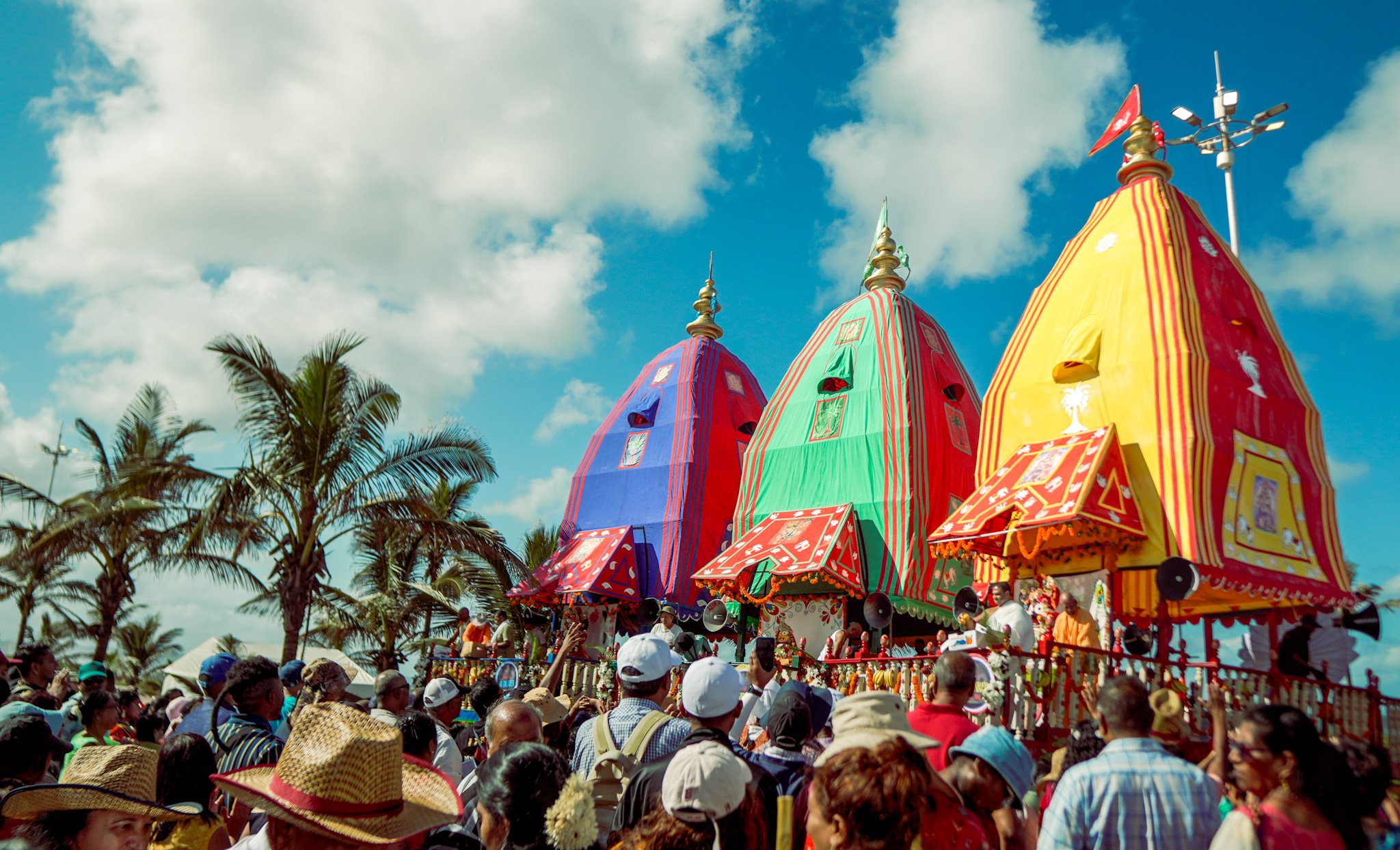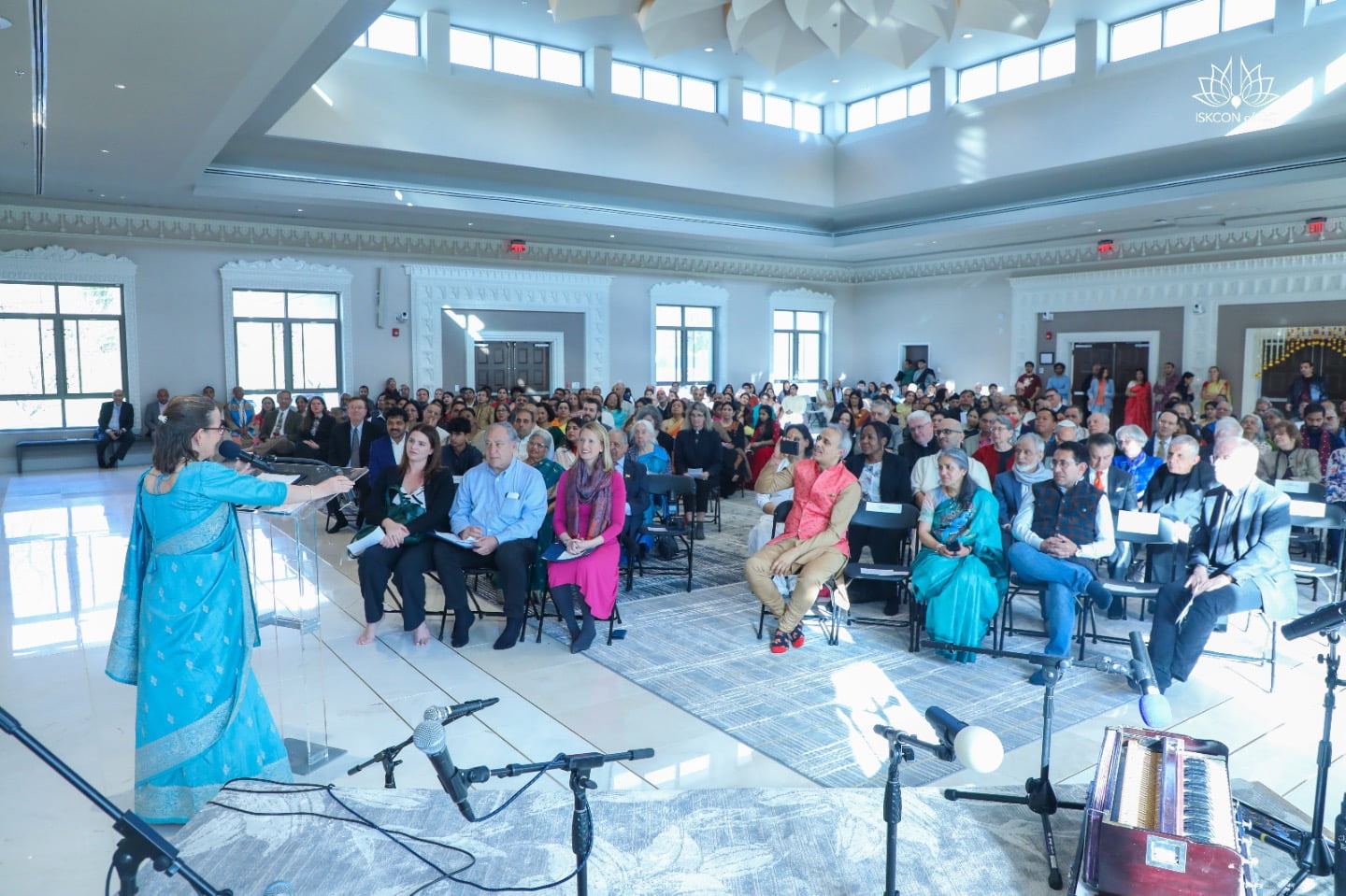ISKCON Sannyasis, Gurus, GBCs, and BBT Leaders Meet in India
By Anuttama Dasa, ISKCON Minister of Communications | Mar 07, 2019

Mayapura, India—Nearly eighty top ISKCON leaders from around the world met at the society’s global headquarters in West Bengal for three full days, March 4-6, to discuss opportunities and challenges in expanding the ISKCON movement.
The meeting was the third “Sanga of Gurus, GBCs, and Sannyasis,” or SGGS (sanga means association or meeting; sannyasi is a renunciate). Prior meetings were held in 2015 and 2017.
The meetings were held at the ISKCON Mayapura community, home of the Temple of Vedic Planetarium (TOVP)—now slated to be opened in 2022—and was coordinated by the Strategic Planning Team of the ISKCON Governing Body Commission (GBC).
The first morning of the SGGS was designed to help members get to know each other better. After a rousing inaugural kirtan, the leaders shared individual stories in small groups how they came to the Krishna consciousness movement. A later topic was self-care—the need for leaders to look after their own spiritual, emotional, and physical health even while busy leading a global society.

The inaugural kirtan.
“ISKCON members cultivate self-less service to help alleviate suffering in the world by spreading Krishna conscious,” said Bhaktimarg Swami, a Canadian based leader. “But Srila Prabhupada, ISKCON’s Founder-acarya, said our first duty is to save ourselves; so we have to balance service to the Lord and others with the need to keep ourselves strong,” Swami said.
“We were seeking both tangible and intangible results from the meetings,” said Braja Bihari Das, the main facilitator during SGGS. “We wanted first to create an environment conducive for deep interpersonal association between top leaders. These people travel the world and have little time to interact face to face, so being together is important.”
The meeting also tackled organizational issues.

Braja Bihari giving an introductory speech.
Braja Bihari explained: “We organized much of the event around small group interactions and asked questions like, ‘How can the leaders today ensure proper training and preparation for gurus and leaders in the future?’ And, ‘How can local leaders interface with travelling teachers/preachers with a shared vision so as to not undermine each other’s efforts?’”
SGGS participants considered that although ISKCON devotees often hear that Srila Prabhupada asked his followers to cooperate; as ISKCON has grown the need for working together has only become more apparent—and difficult.
Obstacles to cooperation within ISKCON’s global communities include cultural barriers, language, age, geography, ethnic origins and more. That Srila Prabhupada created various centers of authority, and expected them all to cooperate, can itself be a source of strength…or discord.

Group discussions.
In his Will, Prabhupada stated that the GBC is the “ultimate managing authority” of ISKCON. He also empowered some senior disciples to be sannyasis, those who lead by travelling and teaching. He also taught that his disciples should initiate disciples of their own to continue the spiritual lineage, or parampara tradition. He also established the Bhaktivedanta Book Trust with its own set of Trustees, to oversee the publishing arm of ISKCON.
“If we are not cautious, these power centers can become opposed to each other, instead of working in harmony,” Braja Bihari said. “Sadly we’ve seen too many of those oppositional relationships, and its hurt our society.”
In that regard, members of SGGS were updated regarding the inauguration of the SABHA, a group of 30 respected international leaders that was established to advise the GBC, and to review and propose GBC resolutions.

Radhanath Swami and his group share their stories and experiences.
The SABHA was a direct outcome of the 2017 SGGS. That year the SGGS spent hours discussing how to strengthen the leadership of ISKCON, and to create additional support of, and accountability for, the GBC. The SABHA was born out of those conversations.
One of the most energized sessions of this year’s SGGS was a lengthy discussion about the need to more carefully study Srila Prabhupada’s books, and to promote such study more widely in the ISKCON community.
SGGS members looked at what prevent such reading and study: Over-booked service schedules, job pressures, short attention spans of young people today, devotees reading other devotee writer’s books instead of Prabhupada’s, and a variety of modern distractions.

Malati Dasi and Dina Sharana Dasi at the meeting.
They also considered solutions: Forming reading groups, reading retreats, promoting additional organized study in temples, “study-buddies,” and reminding ISKCON members everywhere that Prabhupada’s books are the foundation of study for all.
Inspired by the discussion, during the final day of the meeting part of the planned schedule was set aside to allow the leaders to collectively read Sri Caitanya Caritamrita.
Members left the meeting in an optimistic spirit. Krishna Ksetra Swami, a sannyasi and initiating guru in ISKCON, as well as a Ph.D. holder from Oxford University in Religious Studies, concluded, “The SGGS helped us be reflective about our society on many levels. It was a chance for us to think about our short term and long term future, especially to ask what we can individually and collectively do so that the mission of Srila Prabhupada survives and thrives for generations to come.”












